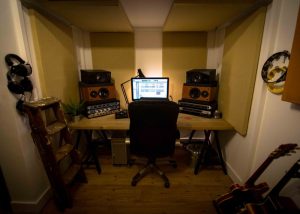 Blog provided by The Foam Factory
Blog provided by The Foam Factory
If you walk into a professional recording studio, you might notice acoustic foam panels lining the walls of the vocal booth. The basic idea behind acoustic foam is that it can absorb echoes and reverberations, but how does it accomplish this and why is this necessary for making quality recordings?
If your recording room is filled with loud echoes, the sound of your vocals can become muddled and distorted. In the worst cases, you might even hear acoustic delays on the recording. Echoes exist because sound waves bounce off flat, reflective surfaces and reflect throughout a room. In contrast, acoustic foam is designed to provide a surface with the opposite qualities to stop unwanted sound from spreading throughout the room. Acoustic foam’s soft, porous open-cell structure causes sound waves to pass through it while gradually dissipating as heat.
Even if you are in a room that is not prone to loud echoes, sound proofing foam is needed to deal with indirect sound affecting your recording quality. To elaborate, direct sound travels straight from the source to the receiver, while indirect sound bounces off walls or surfaces before reaching a receiving point. Direct sound is clear and high-quality while indirect sound can add unfortunate aberrations to your recording. Because of its absorbent surface, acoustic foam helps absorb indirect sound before it reaches your microphone and ruins your recording.
It’s also important to note that your recording room shouldn’t be completely free of echoes. It usually sounds better to allow a little bit of reverberation when you’re recording vocals. Fortunately, acoustic foam does not completely eliminate sound within a room. Sound absorbers only reduce excess vibrations, rather than preventing sound from existing.
If you need acoustic foam for the best sound quality inside your recording studio, check out The Foam Factory’s collection of acoustic foam products. You’ll find traditional foam panels, ceiling tiles, and bass/broadband absorbers for corners. All of their acoustic foam products are fire retardant and safe for use at home or at work. Contact them today for any questions or inquiries about their acoustic foam’s technical data and capabilities. You can reach them by email at info@foambymail.com or by phone at 586-627-3626.
